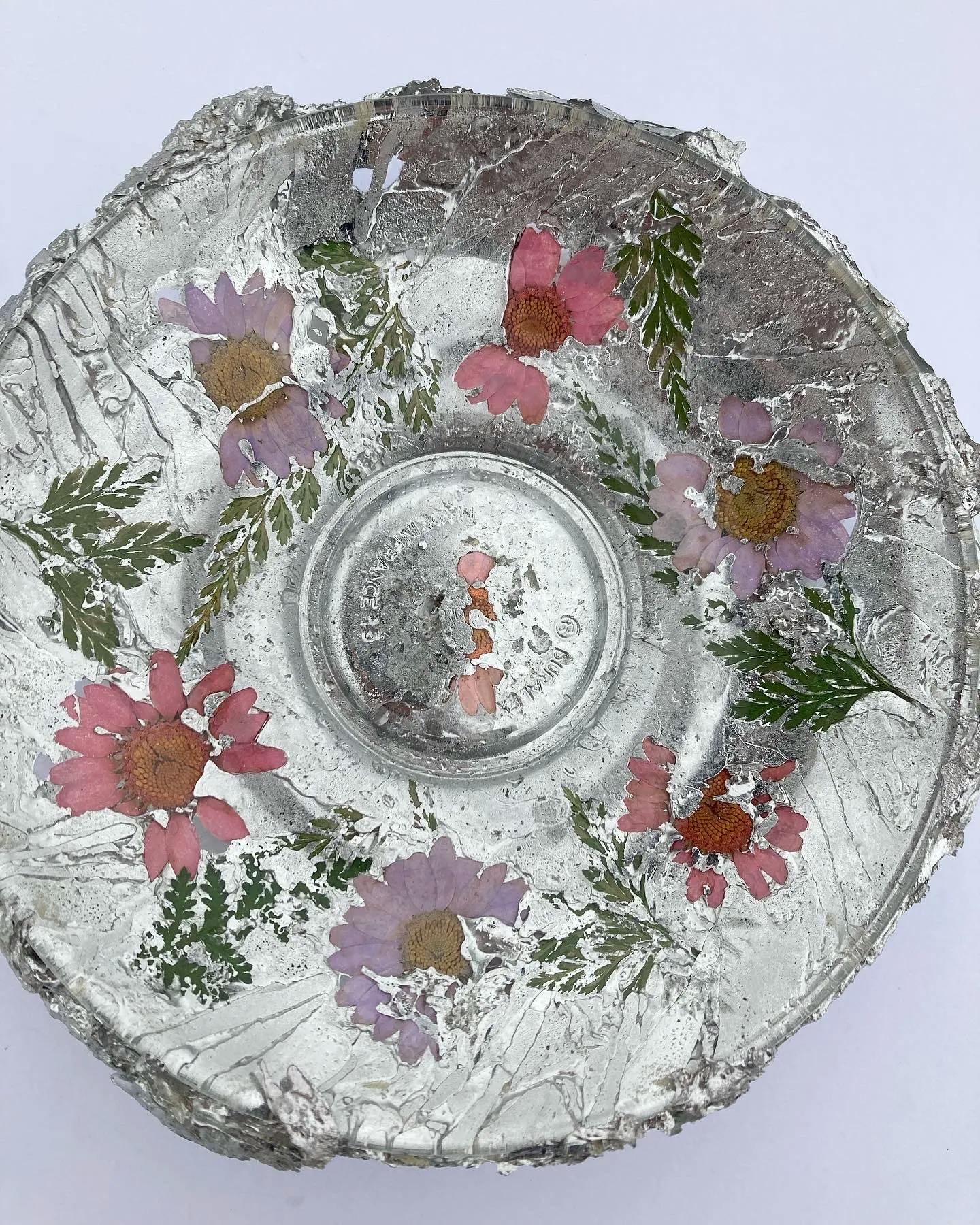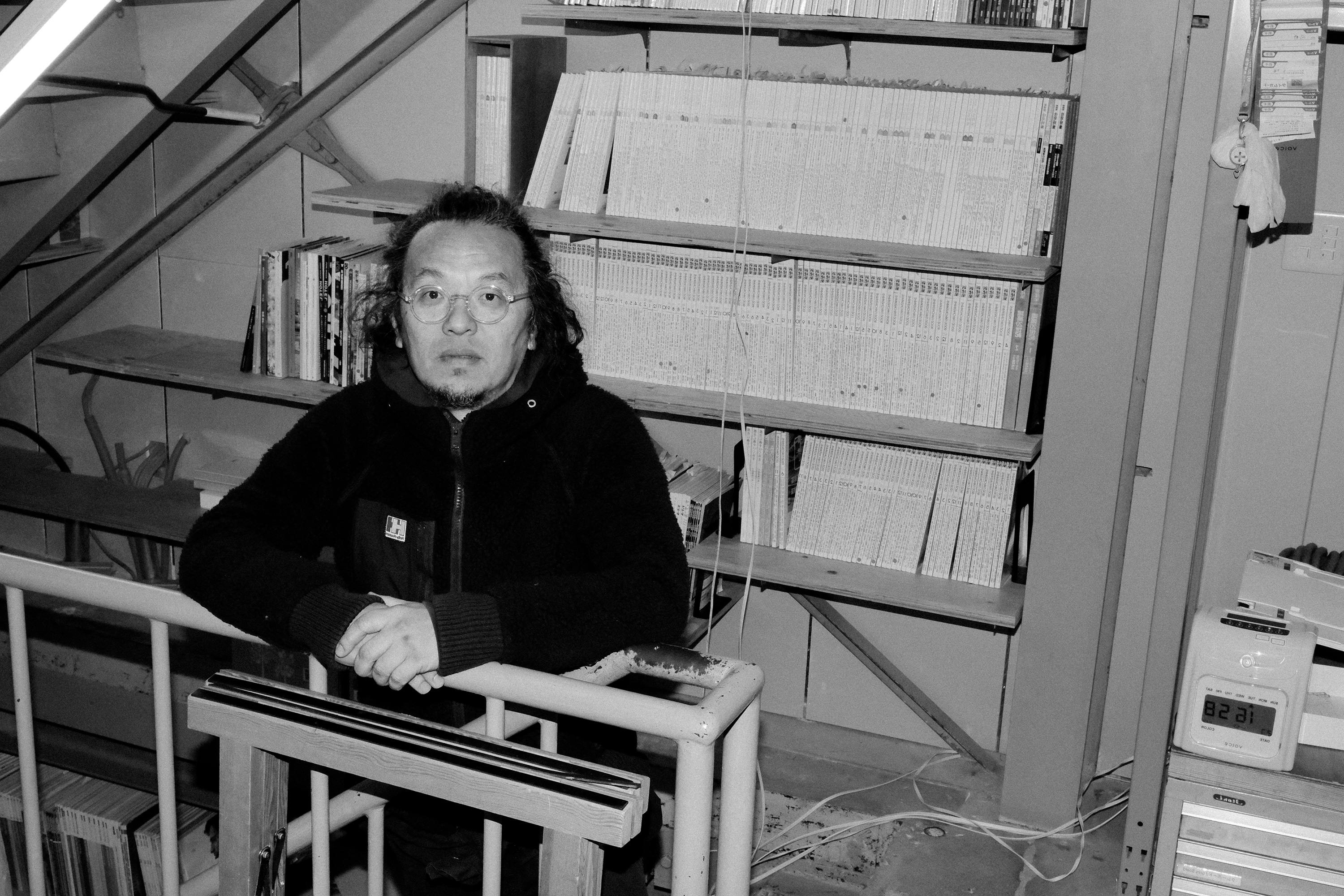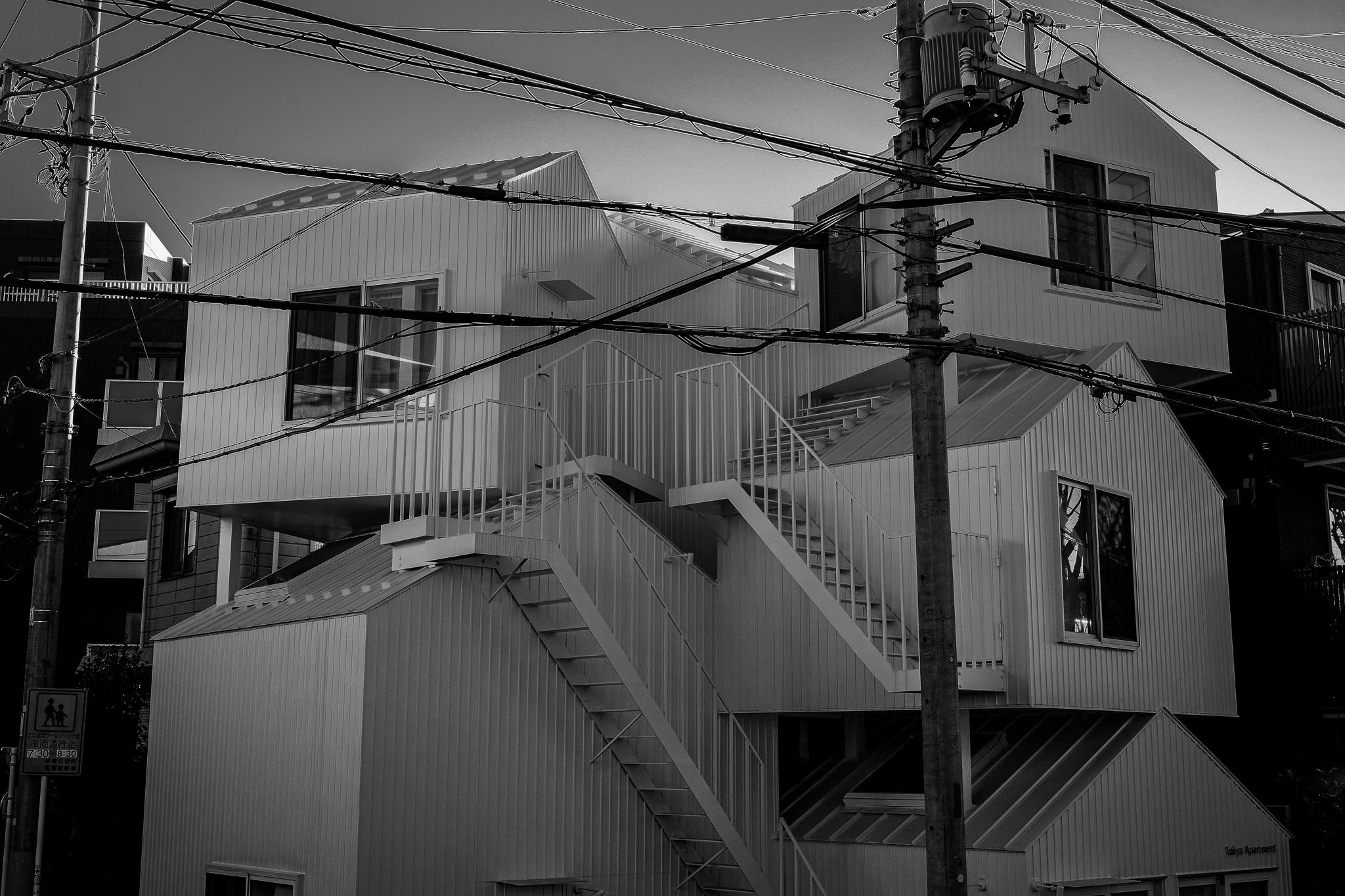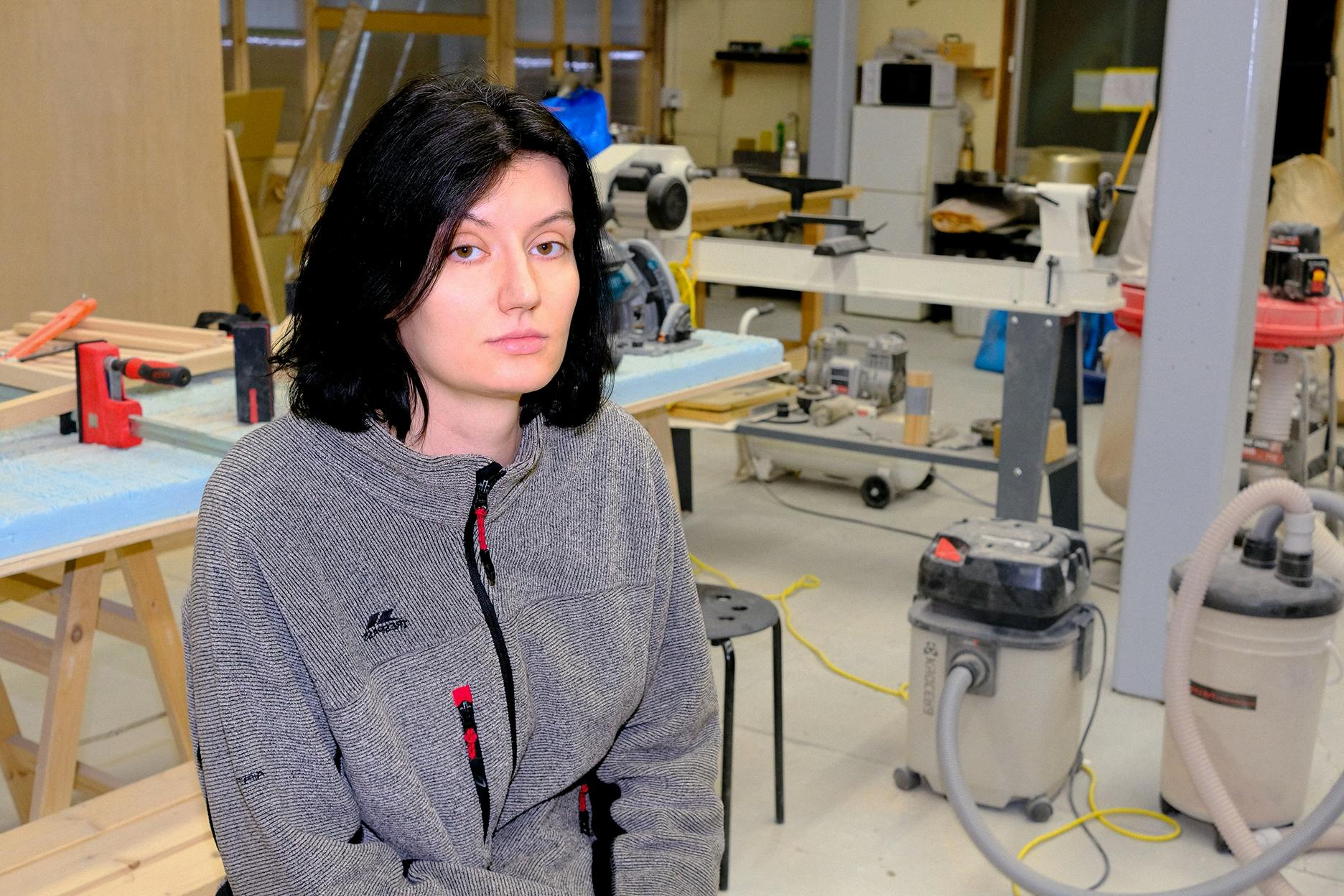
Studio Visit with Kathleen Reilly
We visit artist and object designer Kathleen Reilly in her shared studio in Western Tokyo
An RCA alum, Kathleen and I had some people in common back in Europe. We're standing outside the bar while Kathleen gives her boyfriend directions, in fluent Japanese, on the phone. I puff away on my cigarette; head cocked to the side in amazement. How did this Scottish Artist and Designer start her career and creative practice in Tokyo, and how did she do it all in her second language of Japanese? The more we hung out, and I heard her story, the more I wanted to do a studio visit in her West-Tokyo shared space and sit down and properly hear her story in-depth.
We spoke about her upbringing and creativity within her family, the scholarship which brought her to Japan and the two years of that scholarship which were fully dedicated to learning and mastering the Japanese language, as well as the differences between the creative scenes in both Japan and the UK and how her environment has inspired the poetic objects she makes.
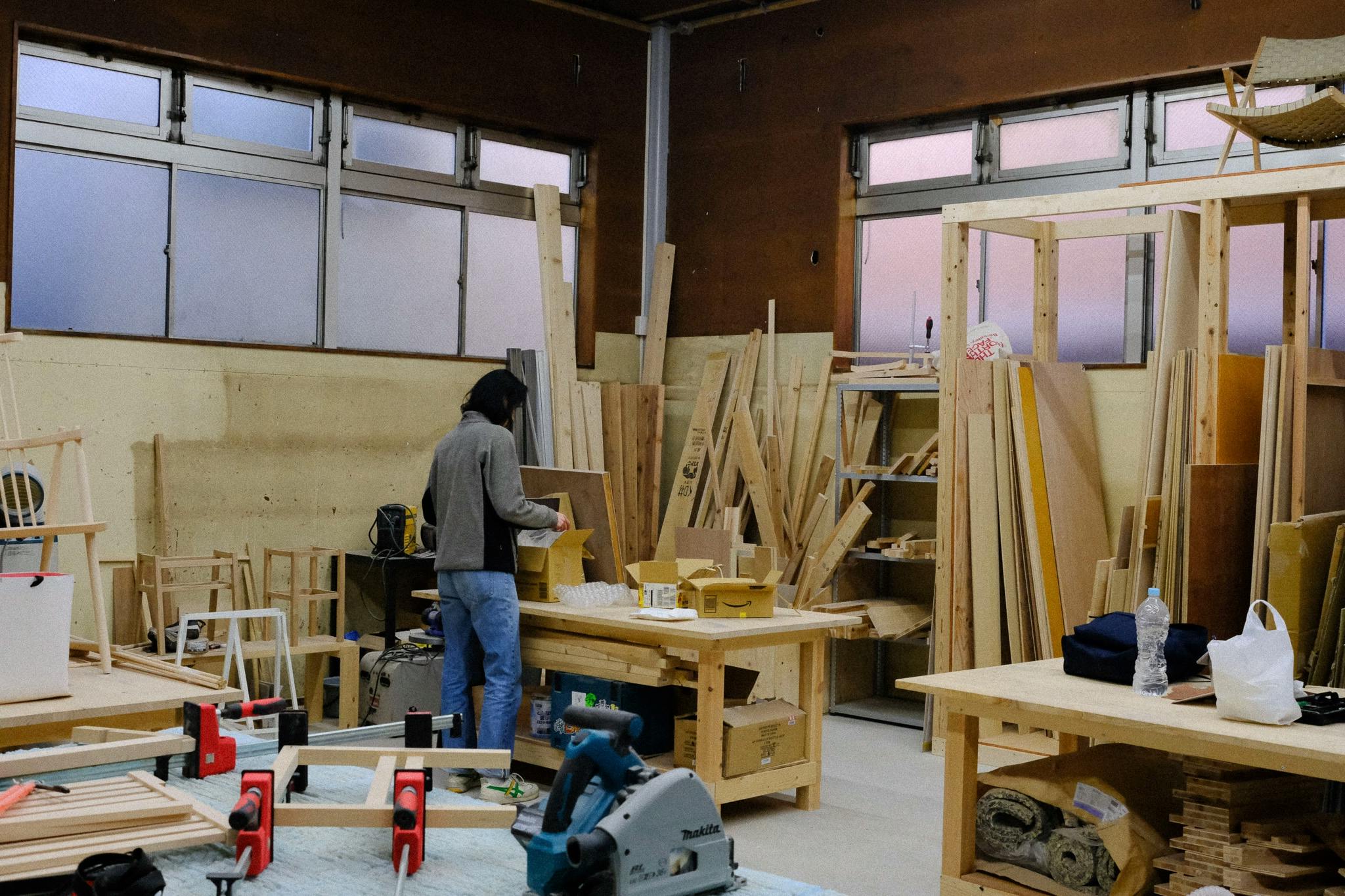
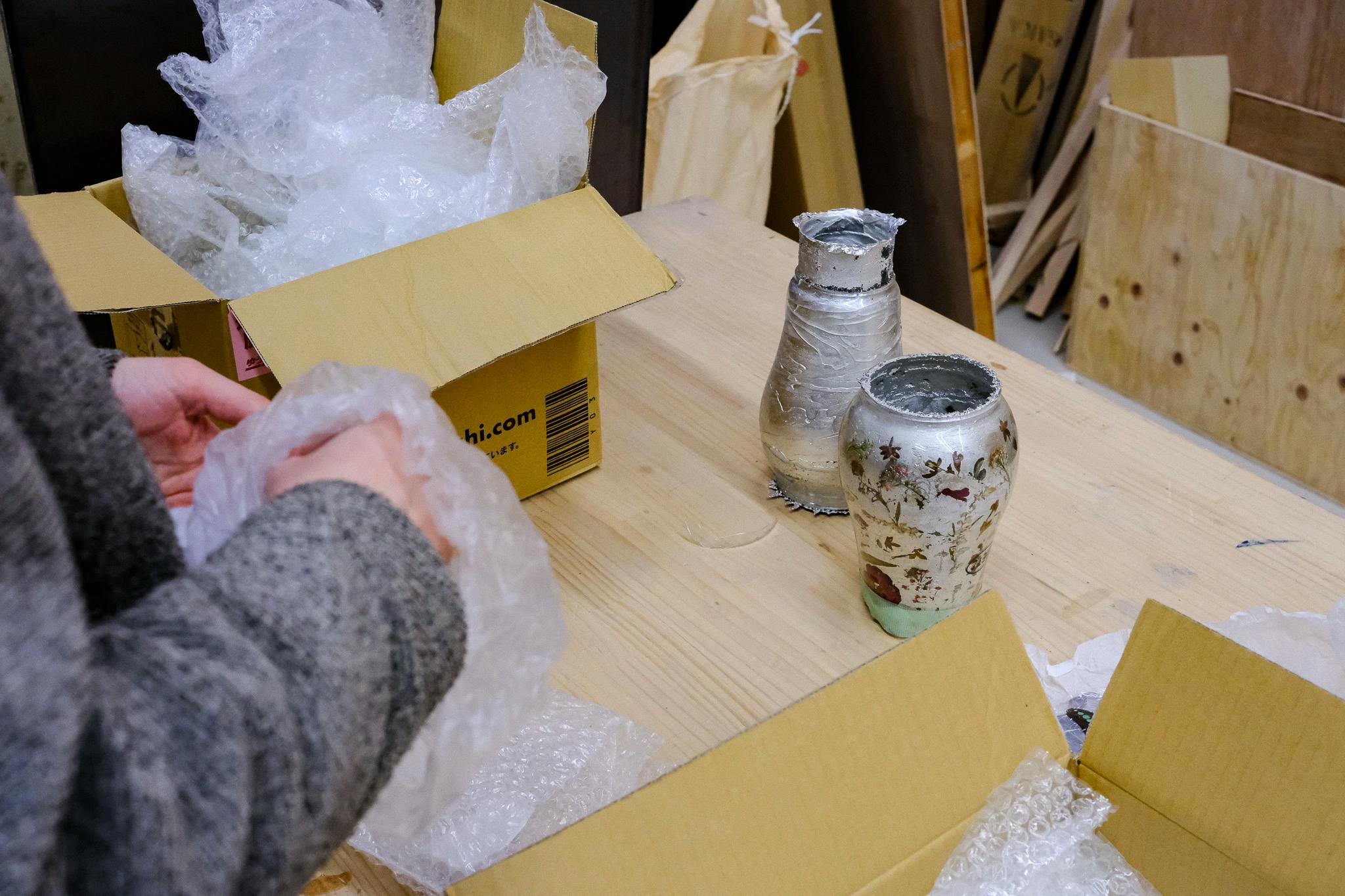
Kristen de la Vallière_ How did you get into design?
Kathleen Reilly_ In my family, everyone's pretty creative. My uncle is a painter, and my aunt is a ceramist – so I've always grown up with an arts background and been really supported to do what I want to do. I suppose in some households, it can be tough because we all know the arts are tough to make money etc. But yeah, for me, I was lucky that they were really encouraging. So originally, I wanted to be a painter because I was really looking up to my uncle. I went to a portfolio prep class after school. There was a teacher in my secondary school who made jewellery, and he asked me, "Do you want to do this one-day course per week while you're taking other classes?" And then I made my first ring. And I was really interested in it. There was something about metal, the way you can melt it down and constantly recycle and change it into different things, that really fascinated me. I found the material fascinating and wanted to learn more about it.
And so where was that?
Glasgow in Scotland. I did my bachelor's degree in Silversmithing and Jewellery at the Glasgow School of Art. Afterwards, I did my Fine Art Masters at the Royal College of Art. So I kind of moved into a more object space practice. I stopped making jewellery completely. I want to make poetic objects on a bigger scale than jewellery. Actually, I came to Japan in 2013 during my third year at the Glasgow School of Art and did a three-month exchange.
At this time, I couldn't speak any Japanese. I got to do a course where we made a Damascus steel knife; the scale and the ability to hammer the metal into a larger form were really interesting. This changed my approach to everything that I was doing. I was inspired by Japanese craftsmanship and the metalwork here. And I wanted to make larger objects. So I returned after my third year, after the exchange, and started my fourth year of university in Glasgow. Then, I decided to make objects rather than jewellery for my degree show.
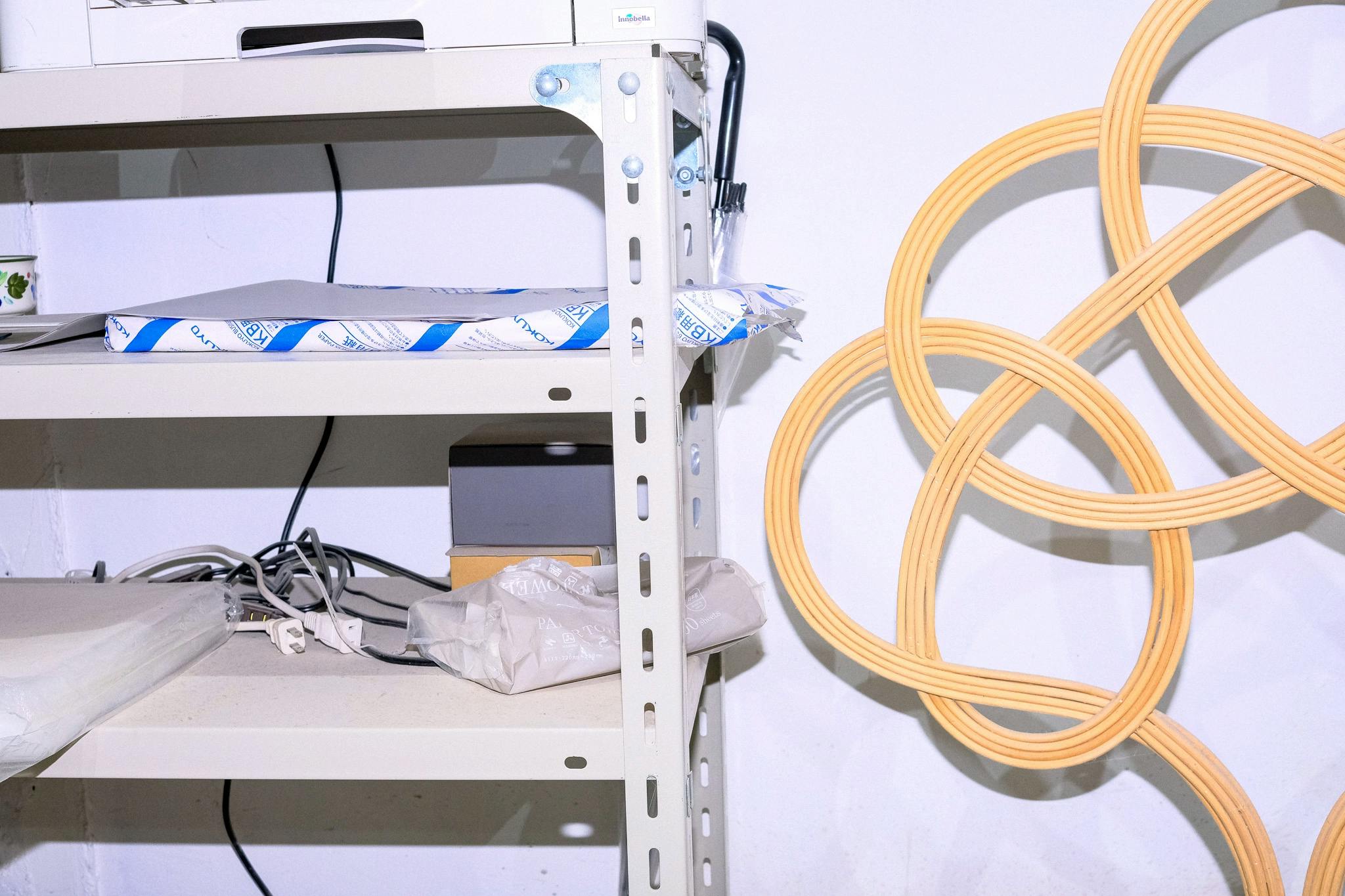

So what made you choose to come to Japan? Was it by choice or the exchange the University offered?
No, I chose it. There were not many choices; it was Japan and Canada. But I just always wanted to go to Japan. I don't know why. From a young age, I was really interested in Japanese culture; I felt some type of magnetism toward the country and culture.
So how did you end up actually moving to Japan permanently?
I graduated from the Royal College of Art in 2018. After graduation, I had an exhibition and also had a job at a design consultancy. I then started feeling this urge to return to Japan to develop a product I had an idea for. There was an exhibition in Japan House London about Tsubame Sanjo, the region where I ended up living. It was about all the craftsmen there and their skills. I saw, and I was like, “Oh my god. I have to go here.” I thought if I could marry their skills with my design concepts, maybe we could make something really amazing. So I started researching how to get there and found a Daiwa Foundation scholarship. I applied for that to learn Japanese and to pursue my training. The first year of the scholarship is just studying Japanese at a university in Tokyo. It was so difficult as an artist not to make anything for so long. I just focused on learning Japanese to speak it well and prepare for the following training at the manufacturer.
What was the second part of the scholarship?
After one year of Japanese classes, we did a one-month homestay. I actually lived in Sado Island in Niigata prefecture with a Japanese family. The point of this is to get used to speaking Japanese every day to improve at it. They were so nice and really helped me communicate with them. They were like my adopted Japanese parents.
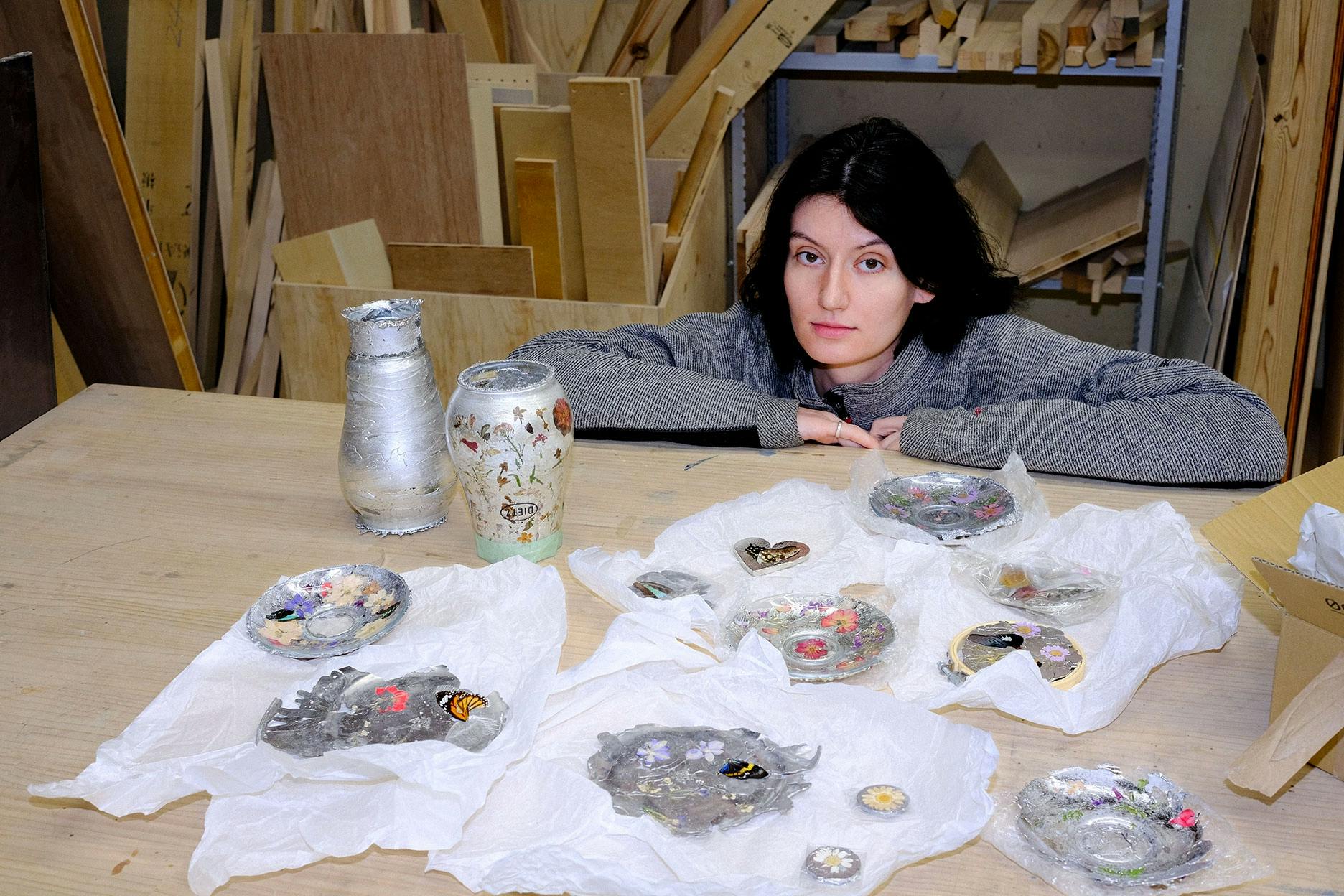

What was the hardest thing about moving to Japan, both personally and design-wise? What was the biggest difference between working in the UK and working here?
Well, as I mentioned, when I first moved here, I couldn't speak Japanese at all – so that was really difficult. Even still now, it's really difficult. For me, it's even if it is in English; sometimes as an artist, it's difficult to explain what you want to say or your idea. So being unable to spit that out, let alone in Japanese, is sometimes frustrating. I feel I have these words just sitting here for hours; I just can't say them. That's really tough.
After your homestay, what was the next step?
The work placement part of the scholarship. I moved from Tokyo to Tsubame Sanjo. Tsubame Sanjo is a famous Metalworking city in Niigata prefecture.
This part of the scholarship was supposed to last six months. So I went to a factory every day and learned about cutlery manufacturing. Eventually, I just started designing my own products and using the manufacturing techniques they had available there. Instead of staying six months, I stayed for a year and a half. Six months is a short amount of time, and I had this project that I had been developing, which was still not done. I wanted to stay and continue there, but I don't drive, and there is literally no public transport in this countryside town where the winter snows heavily, luckily everyone was so generous with offering lifts!
At work, did you speak only Japanese?
No one at the manufacturer or in the town spoke English, so I started the job with my Japanese, which was still quite bad then. I was always trying and doing my best. Also, I'm in a factory where it's mostly words about metal. So it wasn’t even everyday conversation. That was good because that's my field, and I needed to learn these words.

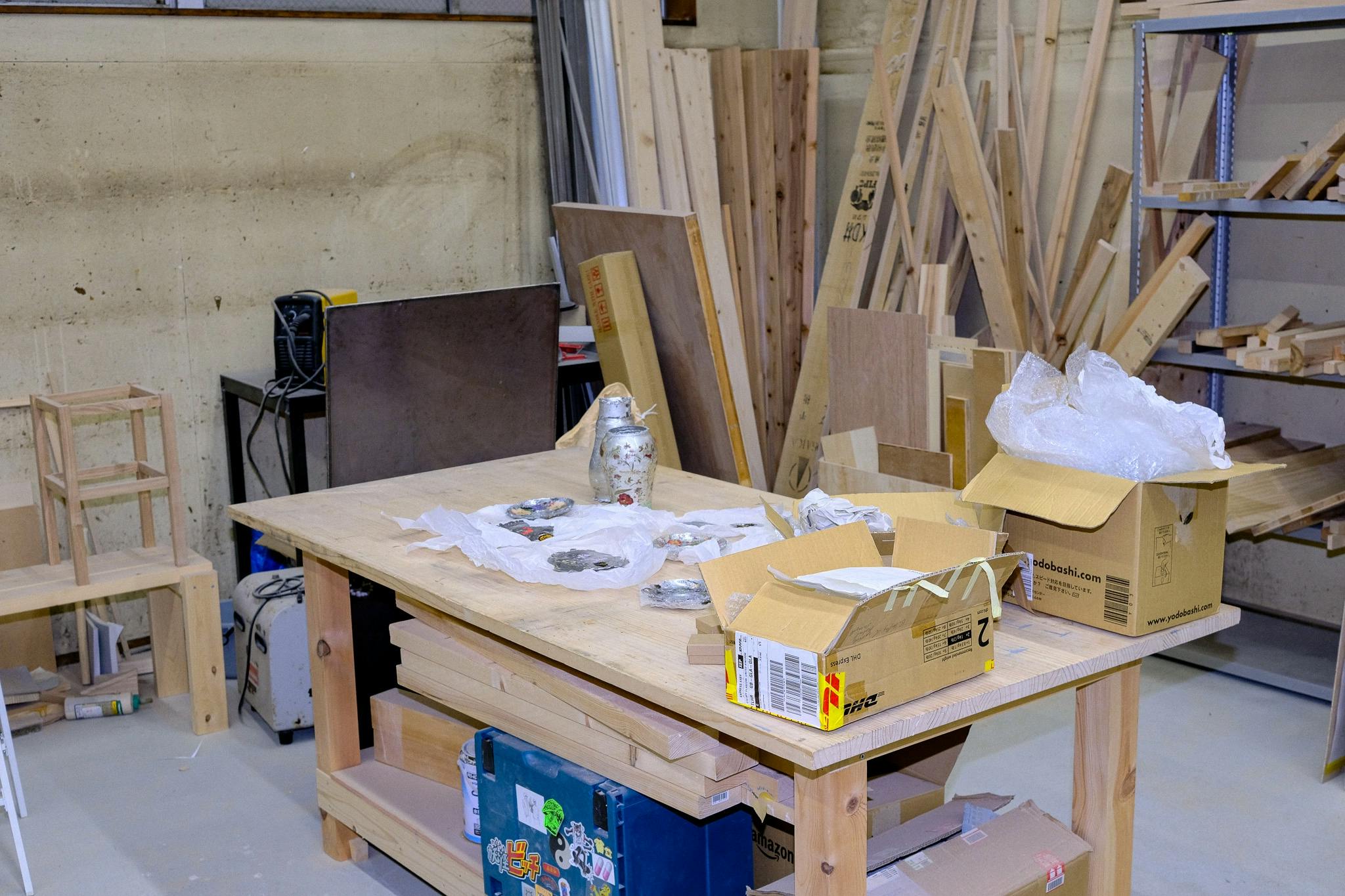
In the year you dedicated to learning the language and exploring the culture, where you weren’t actually able to create, did you experience things which later greatly inspired the work you create now?
There must be so many things. The thing that keeps coming back to me is the perfection in traditional Japanese craftsmanship, which is just really outstanding. I lived in Ogikubo when I was living in Tokyo for the first time, and opposite my house was a studio with a man making shoji screens. So I often used just to watch him there all day, obviously a master of his trade and watch the way that he just sat chiselling in a way I wasn’t familiar with. People are doing that in the UK, but in Japan, people pay so much attention and care for each and every object – I think I really began to appreciate it at another level. The purity of materials and a kind of honest design which has been crafted by this man who has knowledge from several generations. Appreciating these pieces as objects rather than merely just ‘another chair’, so to speak. Actually, thinking about the story behind each object and what went into it. So that simplicity, form, materials and the story of objects. I think we're so used to, like in fashion, it's just about turning things out as quickly as possible. So I think I became more aware of taking time and actually making really authentic objects.
That's one of the really intriguing things about Japanese design. It extends to many different crafts. There's almost a ritual to so many steps within making.
Ritual is a really important word. Especially the knife and platter/board that I'm making. It was also inspired by Japanese table settings and placements or even the various different objects. They have specific cups for specific food. Everything is just so considered, also the way that it's arranged on the table. It's interesting how these elements can bring a new level to your dining experience. There's something very meticulous within these rituals as well.
So what is the knife project you're working on, and how does ritual play into your thinking about it?
That's what I was doing when I was in Tsubame Sanjo. A cutting board with a knife, but the knife is folded, so it sits on the edge of the cutting board. And it's called “Oku” in Japanese, which means “to place” or “to put”. It was inspired by chopstick rest and chopsticks. So you know you have the chopstick rest so that the chopsticks don't get dirty or contaminate other foods or the table. So I was looking at cutlery such as the fork and spoon, which has a curve in it. The curvature of the little neck allows it to sit steadily on the edges of bowls. But knives always slip because they are flat. So I thought there was a way to alter the shape of the knife to elevate it to the level of a chopstick and chopstick rest so that it is not falling. I came up with this idea where it's bent to hook onto the edge but also sits steadily on the edge of a simple square block. So we created a unified function. So that was the influence of chopstick rests and the rituals attached to that.
The knife and cutting board’s packaging is a poem. Japanese chopsticks are placed horizontally on the table, but in Western cutlery, they are placed vertically. The poem is in English, and in English, we read horizontally. The Japanese read vertically. So I switched it. It's just kind of combining the two different cultures.

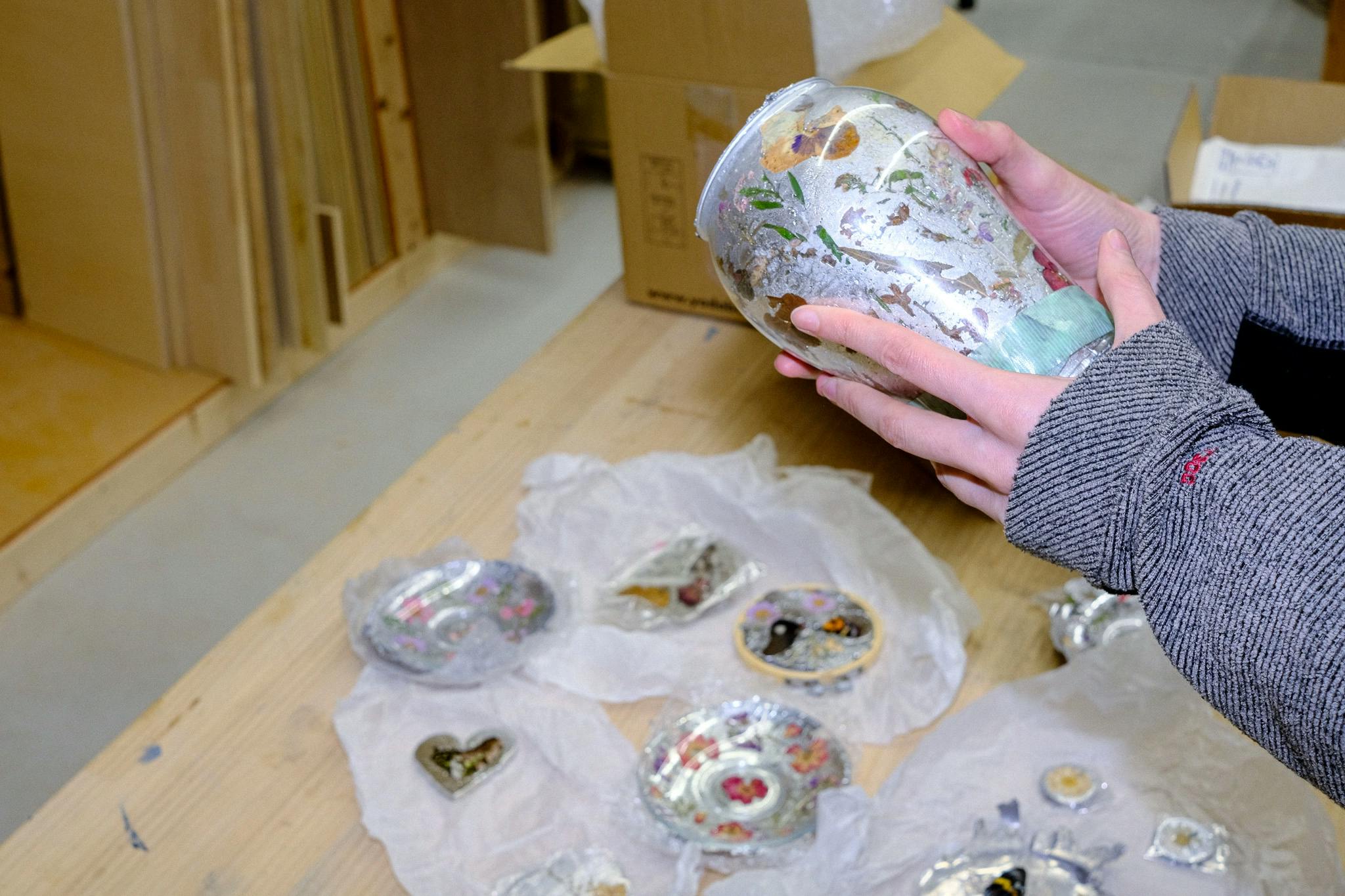
Can you tell me a little bit about the process?
Now I'm using a centrifugal casting machine. But before, when making my samples, I used a pottery wheel I have in the studio. I thought, “If I can put the glass on something that's spinning, the spinning force will allow the metal to spread out.” You put the glass in a sand mould so that it is protected. And then, put the flowers on and pour the molten metal over the glass as the glass spins around.
It's amazing that the flowers don't automatically burn; I imagine that hot metal would destroy them.
It's funny that the butterflies don't burn at all unless it's extremely hot. But the flowers burn a little bit easier. If you get the temperature right, it's okay. I think it's because there's literally no moisture in the objects.
At some point, I was doing a test with the materials. I was in the studio, and I used a piece of paper. It was a mould for something, and I poured metal on it; I think I did it by accident. I was looking at the paper because I was using pewter, which was maybe 230 degrees, and I was thinking, “Why is the paper not burning? If the paper doesn't burn, what about flowers or butterflies?”. Then I tried it, and they didn't burn either.
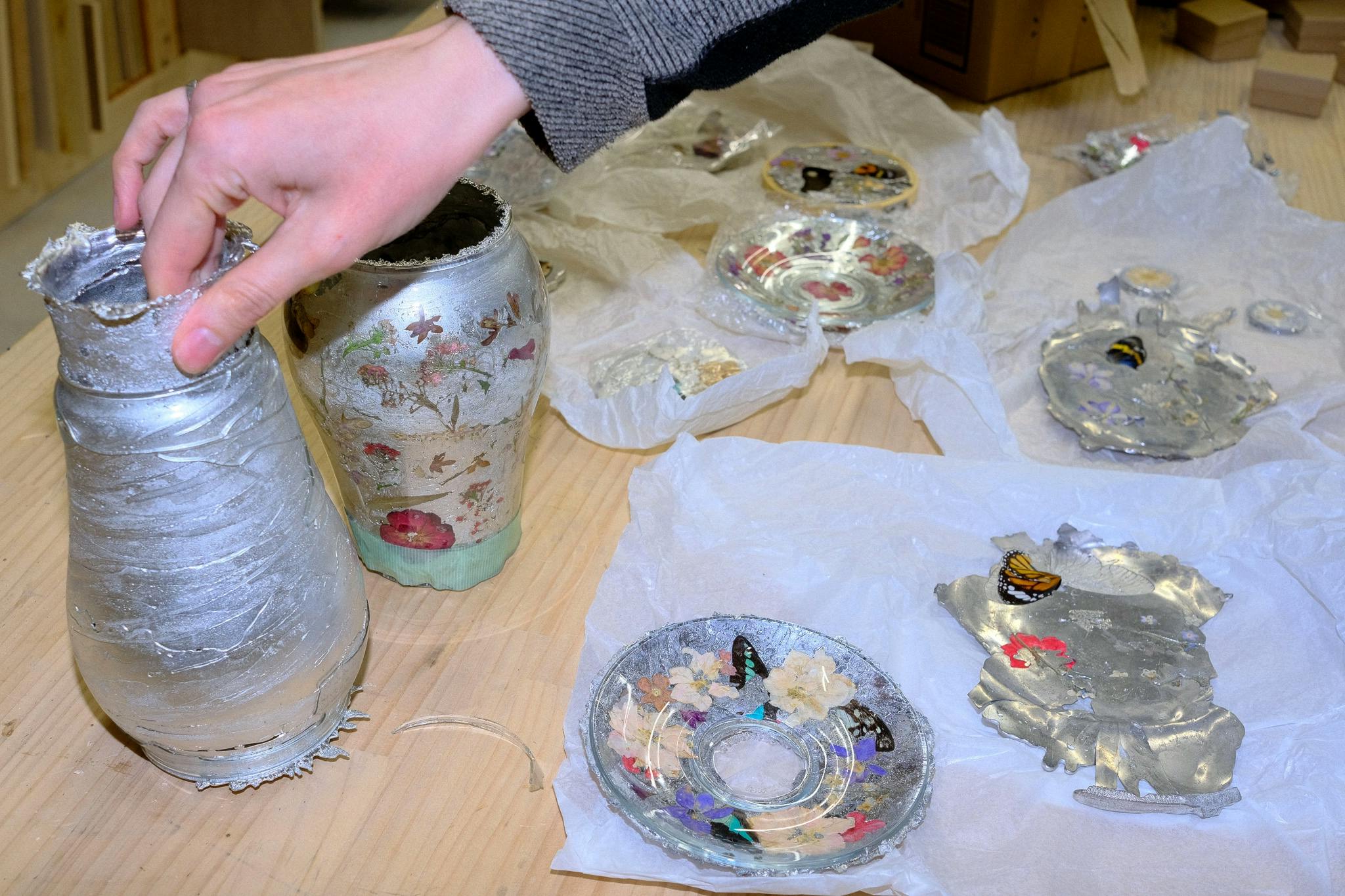
So going back to living in Japan as a designer, what do you think are the advantages for you here? Do you feel there are certain advantages to you and your practice being based in Japan aside from just the inspirational side of things?
I definitely think since being in Japan, after graduating from the Royal College of Art, even though jewellery metal is an art degree, I feel it doesn't really fit anywhere. Is it art, or is it a craft? Or sometimes, my work has elements of product design. It's just my opinion, but I think the UK is not so flexible in that respect. You're in this box, or you're in that box.
But when I came to Japan, I don't know, I'm obviously an outsider looking in, but from my perspective of how I feel within my practice – I feel more confident and more comfortable existing in my undefined sphere. So I think that I felt more comfortable in that respect which is allowing me to grow and also meet like-minded people who also jump between a few different disciplines.
I do think it's important to think about defining your practice, maybe even just with a visual language rather than categorically, but how do you craft and approach that in an authentic way?
Yeah exactly. Well, maybe it's not crafting it's more just letting it come to the surface. Maybe it's in here somewhere. People will come to you for specific things. If they know you have your signature thing.
Do you mostly now work with Japanese companies, designers, galleries, collectors or European or both?
I'm collaborating now, mostly in Japan. I also have galleries in London and Switzerland. When my product (knife and board) launches at the end of this year, we're going to launch it first in the Japanese market and then hopefully worldwide.
Do you feel as an outsider or a foreigner, it's difficult to get into the creative community here in Tokyo?
It can be difficult no matter where in the world you go. I've been here three and a half years now, and I feel I'm in the door but still just entered; you know I'm lucky that when I moved back to Tokyo this year in March, I came to this studio HAKKOTAI product designer Kodai Iwamoto runs. He's a really amazing product designer and also really social. So they are always drinks, parties, dinners and stuff. This was the opportunity to meet many different members of the creative scene in Tokyo. I kind of feel like if your work is good and you can gain respect for what you are doing, I feel people will be more willing to welcome you in.
Do you think you will stay here or move somewhere else?
I definitely would like to stay for another two to three years and then see how it goes after there. It's difficult, though, to find funding for the arts in Japan. There are a lot of opportunities in Scotland for funding, also in Germany and Denmark. But I really like the way my career is going in Japan.








